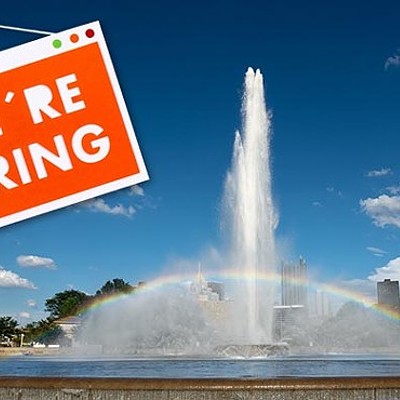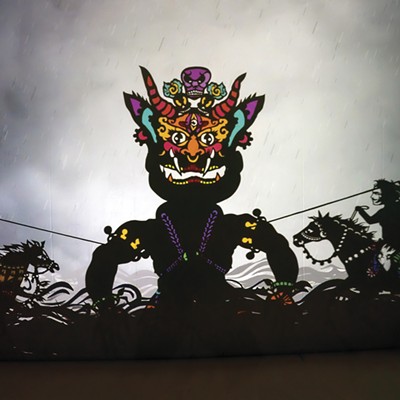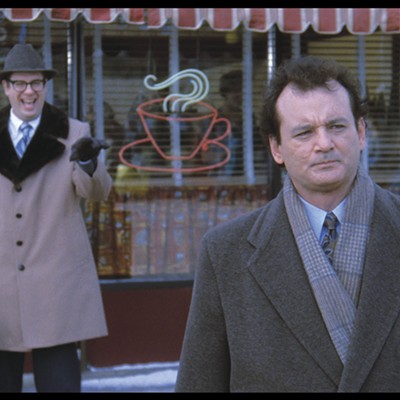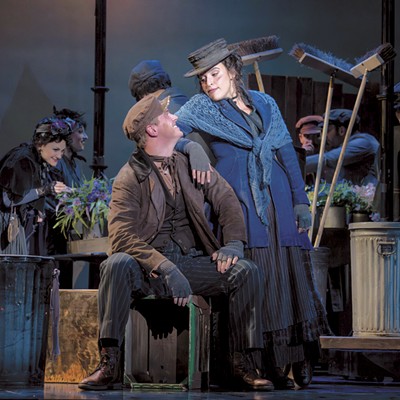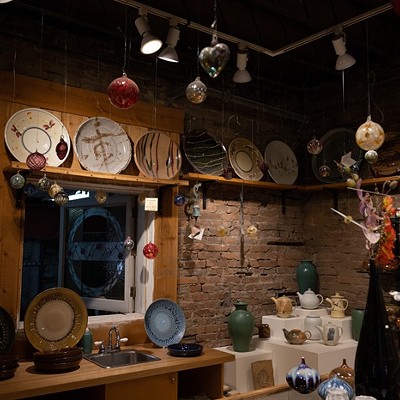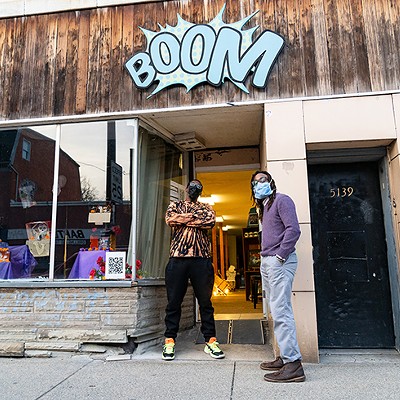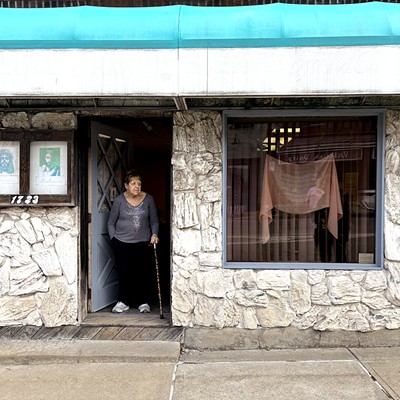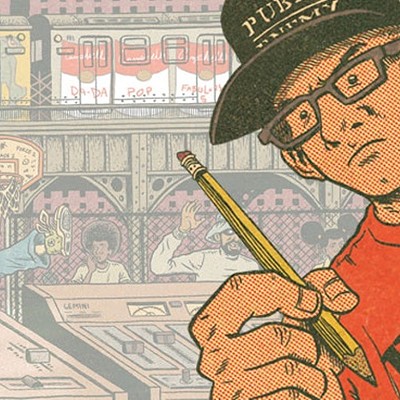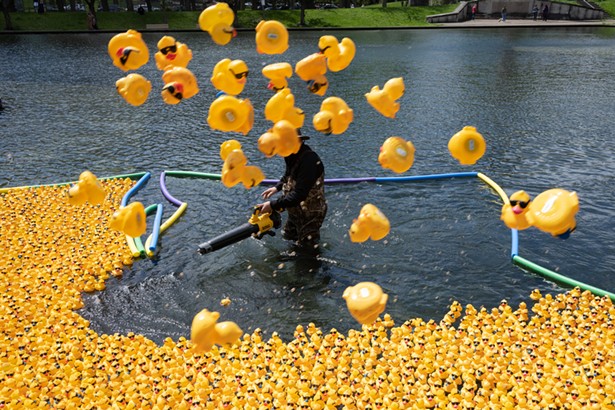
The lead curator of the latest Carnegie International, renowned as one of the largest and longest-running contemporary art exhibitions in the world, set out to create a “really artist-driven” show. That extends to the name of the 58th installment, Is it morning for you yet?, which came from featured artist Édgar Calel.
“I more refer to it as a catchphrase rather than a theme,” says Sohrab Mohebbi, who was appointed as the Kathe and Jim Patrinos Curator of the 58th Carnegie International in 2019, and has since worked with a team to build on the Carnegie Museum of Art’s signature exhibition, which dates back to 1896.
Mohebbi adds that, during a gathering at his current home in Polish Hill, Calel explained that, in his community in Guatemala, “they don't say ‘Good morning,’ rather they say, ‘Is it morning for you yet?’”
“And it was a way to account for different people's internal clocks, and each person's feelings and place in life, and how they can relate to each other,” Mohebbi explains during a phone interview with Pittsburgh City Paper. He says the phrase conjured the questions, “How are we sharing time? Are we on the same time? Are we contemporary?”
“And that was how I started thinking about this, as a way to sort of address some of the questions that come with the Carnegie International, but also this relationship between the present moment and contemporary history,” says Mohebbi, an Iranian-born curator, art critic, and writer whose resume includes curating the SculptureCenter in New York City.
The 58th Carnegie International, debuting on Sat., Sept. 24 and running through April 2023, will present works by artists and art collectives from across the world. It will also engage with audiences through what Mohebbi calls a “very rigorous public program” that includes an opening weekend featuring a new work by New Orleans-based multidisciplinary artist Malcolm Peacock, and performances by Ali Eyal and Christian Nyampeta.
From there, CMOA will connect audiences with artists through the Refractions: 58th Carnegie International Conversation Series, and present a film program at Row House Cinema in Lawrenceville, curated by catalog contributor Rasha Salti. Also on the schedule are docent-led tours, concerts, and other activities open to visitors of all ages.
A museum statement says the show “unfolds along two conceptual overlapping currents: historical works from the collections of international institutions, estates, and artists, alongside new commissions and recent works by contemporary artists.”
The commissions include on-site and local off-site works, first and foremost a sculpture by Cuban American artist Rafael Domenech already on view in the museum’s courtyard. The Berlin-based collective terra0 planted a tree on land donated by the Community College of Allegheny County in response to “broader environmental concerns,” particularly in regard to Pennsylvania, where the logging industry devastated forests in the 19th and 20th centuries. Pittsburgh artist James “Yaya” Hough painted a mural now on view in the Hill District, while works by Tony Cokes will be seen on four digital billboards along Route 28, in addition to a video installed at CMOA.“How are we sharing time? Are we on the same time? Are we contemporary?”
tweet this
Another highlight of the show includes the Museo de la Solidaridad Salvador Allende, a prominent museum of modern and contemporary art in Chile that will, for the first time in the United States, present a selection of their extensive collection of more than 2,800 artworks.
Mohebbi describes the Carnegie International offerings as “very abundant,” with everything from more traditional paintings and sculptures to non-fungible tokens and balloons. “It's quite cross-disciplinary and across any kind of mediums you can imagine.”
In a museum statement, Mohebbi says the 58th Carnegie International artists, many of whom are showing art in the U.S. for the first time, “combine a practice of reconstitution, reminding us that not only do our histories of pain and longing bind us, but furthermore, our narratives of resistance and survival help us reimagine the world.”
“I think it will be an exhibition that provides for an aesthetic experience, and it has a lot of historical ground. So I think it will be an exhibition that you can think about formally, think about historically, and think about aesthetically, and I think these things need to go hand in hand for it to make a great exhibition,” says Mohebbi, who, as one statement puts it, hoped to use the show to “connect local concerns rooted in Pittsburgh’s past to current issues prompting national and international debate today.” His research set out to “explore how we reconstitute our lives after upheavals caused by colonialism, imperialism, and environmental disaster.”
Unlike previous shows, which typically take three to four years to organize, the 58th Carnegie International had the added hurdle of the pandemic. The worldwide event encompassed much of the show’s planning period, affecting the travel and in-person meetings usually required to put together an exhibition of this scale.

Mohebbi says that, while COVID-19 did impede some of the freedoms afforded to past Carnegie International curators, he credits his team for being able to pull off the groundwork necessary in finding the show’s many artists. This includes associate curator Ryan Inouye, curatorial assistant Talia Heiman, and the International Curatorial Council, which includes members Freya Chou, Renée Akitelek Mboya, Robert M. Ochshorn, and Pablo José Ramírez. Curatorial advisors Thiago de Paula Souza, Arlette Quỳnh-Anh Trần, and Renan Laru-an also had a hand in planning the exhibition.
The team was able to cover Southeast Asia and the Middle East, Hong Kong and Taiwan, and South Africa, among other regions.
“While I do believe that it's been a challenge for everybody in any line of work, one thing I've been thinking about is, quite frankly, I feel travel and research are two different things,” says Mohebbi. “And I feel also there are ways that these large-scale exhibitions are done, which is usually about how many miles are traveled, how many places you can go, which I do believe being in a place and walking down the street and sharing time with an artist in studio is really important. Unfortunately, we didn't have as much of that as we were hoping for, but we did bring a lot of existing knowledge to the project.”
“I think it will be an exhibition that provides for an aesthetic experience, and it has a lot of historical ground."
tweet this
The pandemic did, as expected, inform some of the show’s key themes. Like Calel, Mohebbi says fellow Carnegie International artist Tishan Hsu also acted as a driving force by pointing out how the pandemic played into the questions surrounding Is it morning for you yet?, including how “access to vaccine information and health care” differed in communities around the world.
Mohebbi, who previously worked at REDCAT and Hammer Museum in Los Angeles and the Queens Museum in New York, admits that the Carnegie International marks the largest project he has ever undertaken, and he has already been applauded by publications like Artforum for being what they call “the first Western Asian person to helm the contemporary art survey in its 124-year history.”
The show also allowed Mohebbi to return to Pittsburgh, where he performed in 2008 as a musician with 127, a group described in the Carnegie Museums of Pittsburgh magazine as mixing punk, dance, jazz, and Iranian music.
“I have old friends in Pittsburgh,” says Mohebbi. “So it was a beautiful moment for me to be back here and to reconnect.”
58th Carnegie International. Sat., Sept. 24-April 2, 2023. Carnegie Museum of Art. 4400 Forbes Ave., Oakland. Included with museum admission. cmoa.org


